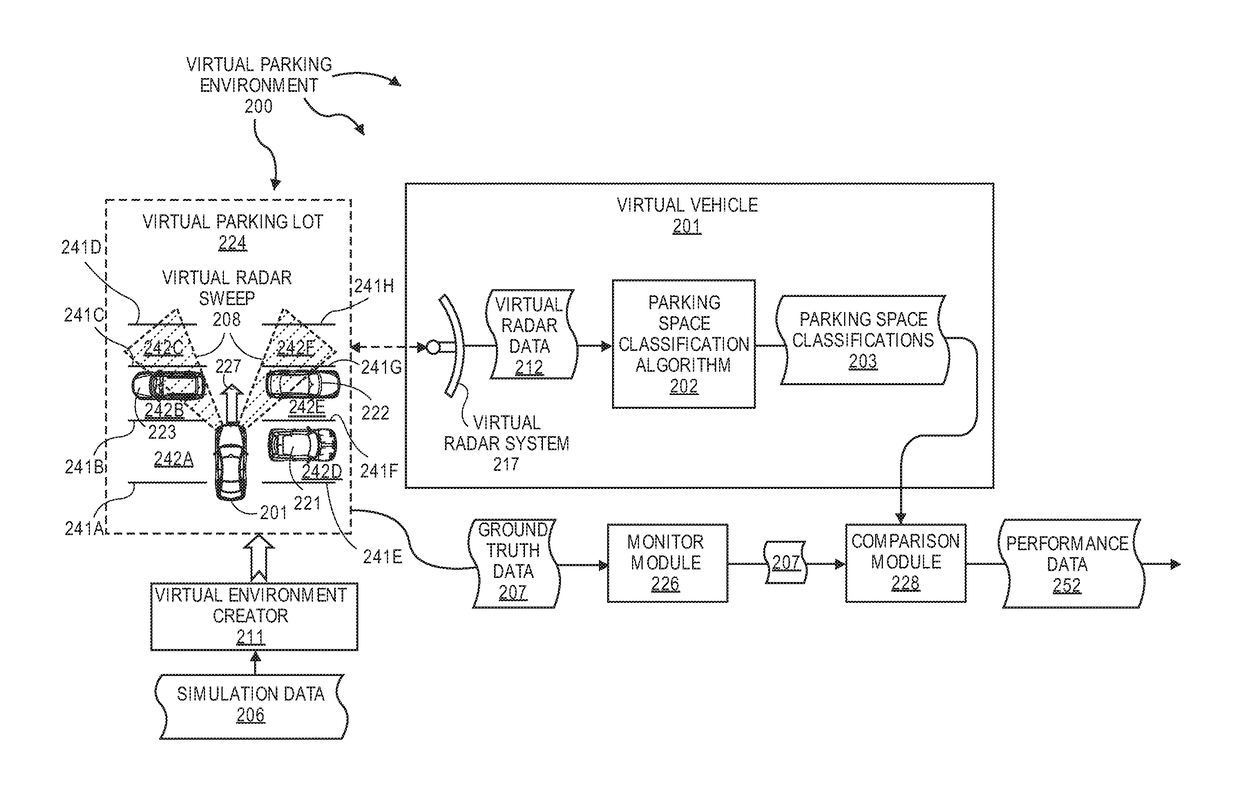Using Virtual Data To Test And Train Parking Space Detection Systems
a technology of parking space and virtual data, applied in the field of parking space detection systems, can solve the problems of difficult to know if there is sufficient space to park a vehicle, cumbersome parking process for a human driver, and difficult to estimate when to turn in to a parking spa
- Summary
- Abstract
- Description
- Claims
- Application Information
AI Technical Summary
Benefits of technology
Problems solved by technology
Method used
Image
Examples
Embodiment Construction
[0011]The present invention extends to methods, systems, and computer program products for using virtual data to test and train parking space detection systems.
[0012]Automated parking is one of the promising aspects of automated driving. Some vehicles already offer the ability to automatically execute a parallel parking maneuver. Solutions to automated parking are envisioned to be easily automated with high degrees of safety and repeatability. However, the success of these solutions depends highly on robustly estimating parking space geometry in essentially real time.
[0013]The radar, as a dynamic range sensor, works well to detect distances to obstacles from the perspective of a moving vehicle. However, these detections can be noisy. Various statistical regression-type techniques can be used to obtain a smooth, reliable estimate of the free space boundary. However, these techniques are difficult to scale and consistently repeat. Radar can suffer from multiple reflections in the pres...
PUM
 Login to View More
Login to View More Abstract
Description
Claims
Application Information
 Login to View More
Login to View More - R&D
- Intellectual Property
- Life Sciences
- Materials
- Tech Scout
- Unparalleled Data Quality
- Higher Quality Content
- 60% Fewer Hallucinations
Browse by: Latest US Patents, China's latest patents, Technical Efficacy Thesaurus, Application Domain, Technology Topic, Popular Technical Reports.
© 2025 PatSnap. All rights reserved.Legal|Privacy policy|Modern Slavery Act Transparency Statement|Sitemap|About US| Contact US: help@patsnap.com



